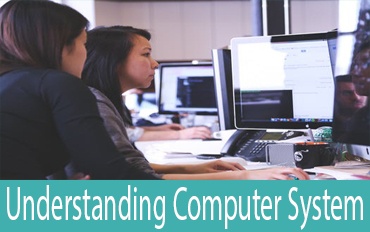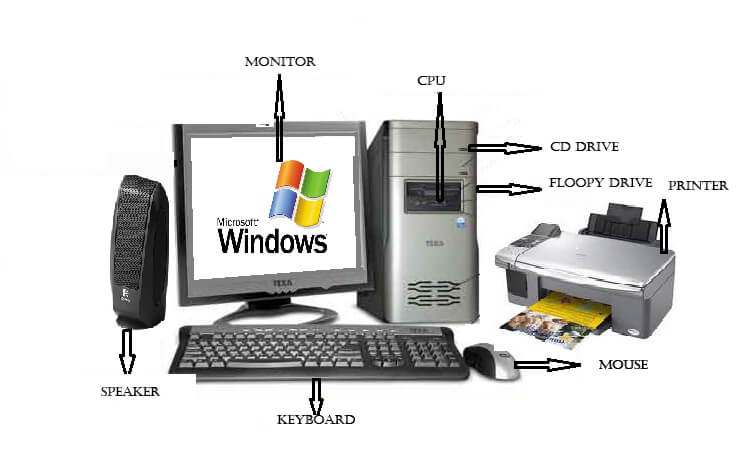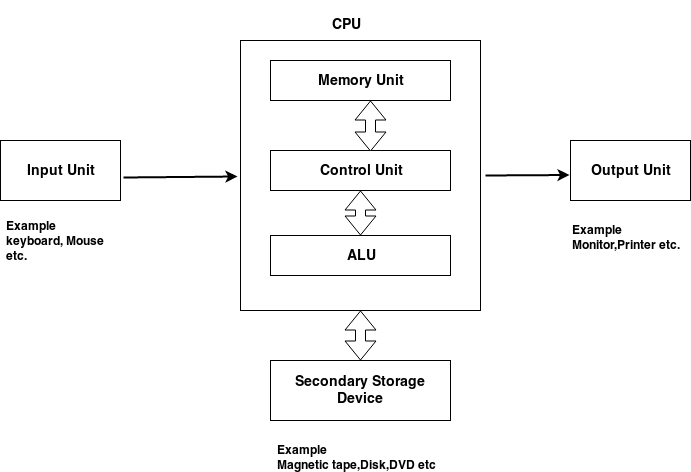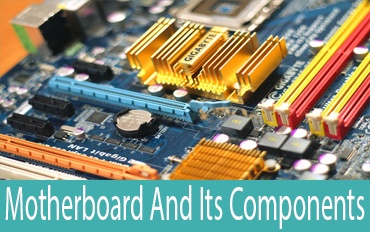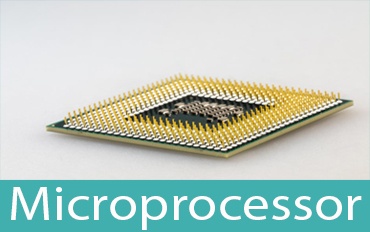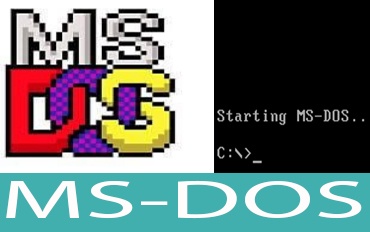Understanding Computer System
What is Computer System ?
A computer system is a set of integrated devices which takes input, process it and give output. Also it store data and information.computer system allows users to input, manipulate and store data. Computer systems include a CPU, monitor, keyboard, mouse and other optional components.
What is Computer ?
Definition : Computer is an electronic device that takes data as an input and processes it under the control of a set of instructions (called program) and then produces a result (output), and all the set is called as computer system.
Components of a computer system
All general-purpose computers require the following hardware components :
Memory : It is used to store data and programs.It may be temporary or permanent
e.g RAM,ROM
Mass storage device : Allows a computer to store large amount of data permanently.
e.g Hard Disk.
Input device : Any device that sends data to a computer is called input device.
e.g keyboard and mouse
Output device : Any device that outputs information or data from a computer to another device is called output device.
e.g display screen, printer
central processing unit (CPU) : This is also called as heart of the computer, CPU is responsible for executes instructions. It receives data input, executes instructions, and processes information and then generate appropriate result.Sometimes referred to simply as the central processor, but more commonly called processor.
Input Devices
Keyboard, Mouse, Digitizing Tablet, Track Ball, Joystick, TouchScreen, Light Pen, Speech Recognition System, Digital camera, Scanner, Magnetic Ink CharacterRecognition (MICR), Optical Character Recognition (OCR), Optical Mark Recognition (OMR), Barcode Reader
Output Devices
Monitor, Visual Display Terminal, Printer, Plotter, Computer Output on Microfilm(COM), Video Output System, Audio Response System
Input-Output Devices
Hard disk drive, Floppy disk drive, USB drive, CD drive, DVD drive.
Computer system parts
computer parts and functions
The Basic components of computer system are given below :
a) Input Unit
b) Output Unit
c) CPU (Central Processing Unit)
i) Control Unit ( C U)
ii) Arithmetic logic Unit ( A L U)
iii) Main Memory unit ( M M U)
d) Storage Unit
a) Input Unit :
Computers need to receive data and instruction in order to process the task. Therefore we need to input the data and instructions into the computers. Keyboard and mouse is the one of the most commonly used input device.
b) Output Unit :
The output unit of a computer receive output from CPU (Central Processing Unit). Example of Output Unit is Printers,Monitor, etc. Other commonly used output devices are floppy disk drive, hard disk drive, and magnetic tape drive.
c) CPU (Central Processing Unit) :
This is main Part of computer system, Is also known as processor and consist of three units which is as follow ,
i) Control Unit ( C U)
ii) Arithmetic logic Unit ( A L U)
iii) Main Memory unit ( M M U)
i) Control Unit ( C U) :It controls all other units in the computer. The control unit instructs the input unit, where to store the data after receiving it from the user. A control unit (CU) handles all processor control signals, control unit directs the entire computer system its also communicate with both the arithmetic logic unit (ALU) and main memory.The control Unit or CU Controls or coordinates all activities performed in a computer system.
ii) Arithmetic logic Unit ( A L U) : All calculations are performed in the Arithmetic Logic Unit (ALU) of the computer. It also does comparison and takes decision.
Arithmetic operation comprises of (Addition, subtraction, division, multiplication) and the logical unit carries out the operation such (AND, OR, Equal, less than, greater then).
Data is transferred to ALU from storage unit when required. Whenever calculations are required, the control unit transfers the data from storage unit to ALU once the computations are done, the results are transferred to the storage unit by the control unit and then it is send to the output unit for displaying results.
iii) Main Memory unit ( M M U) : The main memory unit is used for storage of the copy of the main software program that controls the general operation of the computer.
and temporary storage of a copy of application program instruction, to be received by CPU for interpretation and processing or execution.
d) Storage Unit :
Storage unit is the unit which gives space to store data or instruction of processed data.
It stores information or instruction
It stores Results
It stores consequence of prepared data
There are mainly two types of storage Unit
i) Primary Storage
ii) Secondary Storage
i) Primary Storage : They are also called as Main memory or in other words as RAM (Random Access Memory).
The primary Storage cannot store huge amount of data, and the data store in this memory is temporary (The data is lost when there is power failure), it is also called as temporary memory, they are very expensive.
The other example of primary Storage is L1 Cache of Processor ,RAM
ii) Secondary Storage : Secondary storage are also called as permanent storage unit as when the data store in this memory are stored permanently .The data remains in this memory even when there is a power failure or shutdown, they are much more cheaper then primary memory.
The Example of Secondary Storage are Hard disk and Zip drives
Types of Computers
According to size, operational and processing power computer is classified into different types.
Computer system types Operational Based
These are three types
i) Analog Computers
ii) Digital Computers
iii) Hybrid Computers
i) Analog Computers:
Analog computer can perform several mathematical operations simultaneously.These are almost extinct now.
ii) Digital Computers:
These types of computer uses 0 and 1 for data processing where 0 is for ON and 1 is OFF,it use digital circuits and are designed to operate.Digital computer is programmable. Digital computers are suitable for complex computation and have higher processing speeds.
iii) Hybrid Computers:
It is combination of both digital and analog computers. In this type of computers, the digital segments perform process control by conversion of analog signals to digital ones.
Computer system types according to size and processing power.
The computers are broadly classified into four categories
i) Microcomputers
ii) Minicomputers
iii) Super Mini Computer
iv) Mainframe computers
v) Supercomputer
i) Microcomputers:
These computer uses microprocessor and its central processing unit. Thses are smaller in size as compare to mainframe computer. It is also called as personal computer ,it use keyboard and mouse as input device and monitor or screen as output device also computer memory in the form of RAM and a power supply . These computers can fit on desks or tables
Personal computers :
It is small in size, single-user computer, based on a microprocessor. A personal computer has a keyboard for entering data, a monitor for displaying information, and a storage device for saving data.
Example : desktops, laptops,Notebooks,Tablet and Personal Digital Assistants (PDAs).
ii) Minicomputers:
It is multi-user computer which is capable of supporting from 10 to 100 of users simultaneously.In terms of size and processing capacity, minicomputers lie in between mainframes and microcomputers. Its lie in between mainframes and microcomputer in terms of size and processing capacity. its also called mid-range systems or workstations.
iii) Super Mini Computer
These are 32 bit word length machines and support memory sizes in the range 1 M byte to 8 M bytes. The CPU speeds is nearly 2 million instructions per second. A wide range of fast peripherals are supported by these machines. Its application area is research and development, process control bigger commercial organisation.
iv) Mainframe Computers:
It is powerful multi-user computer which is capable of supporting 100 to 1000 or more of users simultaneously. Mainframe computer are used by large organization for processing bulk data and ERP or highly critical application.
v) Supercomputers:
An extremely fast computer that can perform hundreds of millions of instructions per second, it is basically used by scientist or researchers.
Its has parallel processing and well-designed memory hierarchy and large transaction processing powers its used for study of Quantum physics, mechanics, weather forecasting, molecular theory.
Generation of computer
There are five generation of computer each generation is separated by technology used by them (hardware and software).
Generations of computer
o First generation (1940 to 1956): Using vacuum tubes
o Second generation (1956 to 1963): Using transistors
o Third generation (1964 to 1971): Using integrated circuits
o Fourth generation (1971 to present): Using microprocessors
o Fifth generation (present and next): Using artificial intelligence
First generation (1940 to 1956) :
First generation of computer used vacuum tubes . For input it used punched card and for output it used printouts.
Examples : UNIVersal Automatic Computer (UNIVAC), Electronic Numerical Integrator
And Calculator (ENIAC), and Electronic Discrete Variable Automatic Computer
(EDVAC).
Second Generation (1956 to 1963):
It used Transistors it is smaller and faster then second generation.It used magnetic tapes and magnetic disks for
secondary storage. For input it use punched cards and the output using
printouts
Examples PDP-8, IBM 1401 and CDC 1604.
Third Generation (1964 to 1971):
It use Integrated Circuits (IC).Keyboard and monitor were used in this generation.
Examples IBM 370, PDP 11.
Fourth Generation (1971 to present):
Using Microprocessors and Large Scale Integration (LSI) and the Very Large
Scale Integration (VLSI) technology.Microprocessor is a chip containing millions of transistors and components
Examples The Intel 4004 chip was the first microprocessor.. In 1984, Apple introduced the
Macintosh.
Fifth Generation (Present and Next):
The fifth generation computers are based on Artificial Intelligence (AI). They try to simulate the human way of thinking and reasoning. Artificial Intelligence includes areas like Expert System (ES), Natural Language Processing (NLP), speech recognition, voice recognition, robotics, etc.
You May Also Enjoy Reading This …
